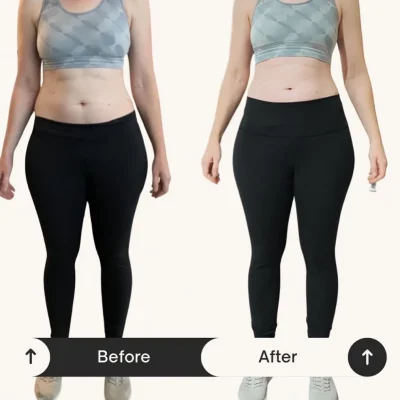There’s a common question many people ask: how often should you exercise to see real results? Understanding the right frequency of workouts is important for achieving your fitness goals, whether that’s losing weight, building muscle, or enhancing your overall health. Generally, consistent exercise 3 to 5 times a week is recommended, but your individual goals and lifestyle can greatly influence this. By incorporating a mix of aerobic and strength training, you can optimize your results and ensure that your efforts are well spent. Let’s investigate the details to help guide your fitness journey.
Key Takeaways:
- Consistent exercise at least 150 minutes per week can lead to noticeable improvements in fitness and health.
- Incorporating strength training exercises 2-3 times a week can enhance muscle tone and metabolism.
- Listening to your body and allowing adequate rest is crucial for recovery and long-term sustainability of your exercise routine.
The Science of Frequency: What Research Says
Research emphasizes the significance of exercise frequency in achieving fitness outcomes. Numerous studies indicate that exercising at least five days a week leads to enhanced cardiovascular fitness, strength, and overall health. For instance, a meta-analysis demonstrated a direct correlation between workout frequency and improvements in muscle hypertrophy and strength. Consistent engagement in structured training sessions not only boosts aerobic capacity but also aids in faster recovery, allowing you to push yourself further with each workout.
Understanding Adaptation and Overload
As your body adapts to your current exercise routine, muscle growth and performance plateaus can occur. To combat this, implement the principle of overload by progressively increasing the intensity, duration, or frequency of your workouts. For example, you might increase your weights, add more reps, or squeeze in an extra workout. This adjustment keeps your body challenged, promoting continuous improvement.
Optimal Training Volume for Various Goals
Tailoring your training volume according to your specific goals is vital for maximizing results. For strength training, aiming for 15-20 sets per week at a moderate intensity can yield significant gains. Conversely, endurance athletes may benefit from 8-12 hours of moderate-intensity exercise weekly. Additionally, those focused on weight loss should consider a mix of strength training and cardio, totaling at least 300 minutes of moderate-intensity exercise each week to see effective changes.
For example, if your goal is muscle gain, performing 4-6 sets of 8-12 reps per exercise, spread across 3-5 days, is advisable. This balances intensity with sufficient recovery, important for muscle repair and growth. Endurance training, on the other hand, often requires longer durations. You might engage in longer sessions, such as 60-90 minutes of steady-state cardio several times a week, mixed with interval training for maximum efficacy. Understanding and applying these distinctions helps you program your workouts to align with your unique aspirations and desired results.
Tailoring Your Routine: How to Align Frequency with Goals
Your exercise routine must align with your specific fitness goals to yield the best results. Whether you aim for weight loss, muscle gain, or improved endurance, the frequency of your workouts should be strategically planned. For instance, adding more sessions per week may be beneficial for fat loss, while focusing on recovery and intensity is key for lifting heavier weights. Time investments in each area can vary, so understanding your objectives will help in customizing a routine that suits your lifestyle and aspirations.
Weight Loss vs. Muscle Gain: Different Needs
The needs for weight loss and muscle gain differ significantly. For weight loss, engaging in vigorous workouts at least four to five times a week can increase caloric burn and accelerate results. In contrast, muscle gain often requires a frequency of about three to four sessions per week, with adequate recovery to allow muscles to repair and grow. Prioritizing intensity and volume in these sessions will drive your progress whether shedding pounds or building strength.
Endurance Training: Frequency Requirements for Cardiovascular Fitness
Achieving cardiovascular fitness through endurance training involves frequent workouts. Aim for at least 150 minutes of moderate-intensity aerobic exercise per week, spread over three to five days. This frequency allows your cardiovascular system to adapt, steadily improving stamina and heart health. As your fitness level increases, consider varying your sessions with intervals, hill runs, or long-distance grinds. Tailoring your endurance routine not only keeps things interesting but also helps prevent plateaus in performance.
Quality vs. Quantity: The Importance of Session Structure
Focusing on the quality of your workouts can often be more effective than simply increasing the number of sessions. A well-structured session includes warm-up, targeted exercises, and cool-down periods. Each component is imperative for maximizing results and minimizing injury risk. You gain more from a focused, hour-long workout with high energy and intention than from two uninspired, half-hour sessions. Prioritizing the planning and execution of each workout can lead to enhanced performance and sustainable progress in your fitness journey.
The Role of Intensity and Duration
Intensity and duration play a pivotal role in achieving your fitness goals. Short, high-intensity workouts, such as HIIT, can yield significant benefits in less time, while longer, moderate-intensity sessions enhance endurance. For effective results, aim to maintain your heart rate within an optimal range for at least 20-30 minutes per session, depending on your fitness level. Balancing both intensity and duration will ensure that you’re pushing your limits without going overboard.
Recovery: Balancing Hard Work with Rest
Integrating recovery days into your fitness routine is imperative for muscle regeneration and overall performance. Your body requires time to repair microscopic tears in muscles that occur during intense workouts. Active rest days can include light activities like walking or yoga, which help maintain flexibility and circulation. Striking the right balance between workouts and recovery can prevent burnout and injuries while allowing your body to adapt and grow stronger.
Adopting a consistent recovery strategy significantly enhances your workout effectiveness. Aim for at least one or two rest days per week, depending on your workout intensity. Including variations such as foam rolling, stretching, or focusing on nutrition can optimize recovery. Listening to your body is vital—feeling unusually fatigued may be a sign to incorporate additional rest. Keep in mind, muscle growth happens during recovery, not just during workout sessions, so prioritize those recovery periods for long-term progress.
Breaking Down Barriers: Overcoming Common Obstacles
Many individuals face barriers that hinder their exercise routines. Identifying and addressing these obstacles can pave the way for long-term commitment and success. Factors such as time constraints and mental motivation often emerge as significant challenges. Tackling these head-on not only helps streamline your fitness journey but also cultivates resilience and determination to keep moving forward.
Time Constraints: Maximizing Efficiency
Finding time to exercise can feel impossible amidst your busy schedule. Prioritize efficiency by incorporating quick, high-intensity workouts that last 30 minutes or less. Opt for full-body routines that maximize calorie burn and muscle engagement. Consider also short, 10-minute sessions throughout the day; even brief bursts can lead to significant health benefits over time.
Mental Motivation: Establishing a Sustainable Habit
Staying mentally motivated plays a pivotal role in maintaining your exercise routine. Set specific, achievable goals that interest you, whether they pertain to weight loss, strength gains, or improved endurance. Enlist friends or family to join you and establish an accountability system. Celebrate small victories along the way, as these triumphs create positive reinforcement and boost your overall motivation.
Developing a sustainable habit relies on intrinsic motivation rather than fleeting excitement. Create a personal workout schedule that aligns with your lifestyle and stick to it to build consistency. Integrating exercise into your daily routine makes it feel less like a chore and more like an integral part of your life. Utilize fitness apps to track progress, log workouts, and connect with others who share similar goals, ensuring you remain encouraged and engaged in your journey to better health.
Real-World Applications: Insights from Everyday Fitness Enthusiasts
Insights from real individuals illustrate how tailored exercise frequency leads to tangible results. Many fitness enthusiasts emphasize consistency and frequency rather than intensity alone. By sharing stories of their workout regimens, they highlight that finding a balance that works for their lifestyle promotes sustainability and enjoyment, imperative for long-term success. Examples from various demographics showcase how personalized schedules yield distinct benefits, whether through group fitness classes, solo runs, or home workouts.
Success Stories: Transformations Through Strategic Frequency
Many individuals have experienced significant transformations by adjusting their workout frequency to align with their goals. For instance, Sarah, a busy professional, dedicated just four days a week to strength training and saw a 30-pound weight loss within six months. Likewise, Mike, an avid runner, modified his approach by incorporating rest days every week, which helped him overcome previous injuries and improve his marathon time remarkably. These success stories illustrate the profound impact of strategic exercise routines.
Lessons Learned: What Works and What Doesn’t
Best practices from everyday fitness enthusiasts reveal that sticking to a routine, while remaining flexible, maximizes results. You may find that setting realistic goals, tracking progress, and adapting your schedule based on your physical and mental needs work well. Some individuals discovered that working out too frequently led to burnout or injury, while others thrived on a mix of moderate effort and recovery. This adaptability emphasizes the importance of truly listening to your body as you fine-tune your exercise regimen.
In your fitness journey, learning what works and what doesn’t can significantly shape your approach. An overemphasis on frequency without incorporating rest can lead to diminishing returns, while a personalized regimen that varies in intensity can provide a sustainable path to improvements. Balancing different types of workouts, incorporating strength training with cardio, and allowing for adequate recovery days often resulted in sustained motivation and enhancement in overall performance. By gathering insights from various perspectives, you can create a more effective and enjoyable fitness strategy.
Summing up
Considering all points, to see real results, you should aim for at least 150 minutes of moderate-intensity exercise or 75 minutes of vigorous exercise each week, along with muscle-strengthening activities on two or more days. Consistency is key, so find a routine that fits your lifestyle and stay committed. Monitor your progress and adjust your workouts as needed to challenge yourself. Ultimately, by prioritizing regular physical activity, you’ll improve your health and achieve your fitness goals more effectively.
FAQ
Q: How often should I exercise to see results?
A: To see noticeable results, it is generally recommended to engage in moderate exercise at least 150 minutes per week, or about 30 minutes a day, five days a week. This can include a mix of cardiovascular exercises, strength training, and flexibility workouts. Adjusting the frequency and intensity based on your personal fitness goals and starting level can help you achieve more tailored results.
Q: Can I see results if I only exercise a few times a week?
A: Yes, exercising a few times a week can still yield benefits, especially if you focus on high-intensity workouts. Aim for at least 2-3 days of strength training and 2-3 days of cardiovascular exercises. Consistency over time is key, so even if your schedule is tight, making those workouts count with intensity and proper form will help you progress.
Q: What types of exercises should I include to maximize results?
A: To maximize results, it’s beneficial to incorporate a variety of exercise types. Aim for a balanced routine that includes cardiovascular activities (like running, cycling, or swimming) to improve heart health; strength training (using free weights or resistance bands) to build muscle; and flexibility exercises (like yoga or stretching) to enhance mobility. This well-rounded approach not only boosts the effectiveness of your workouts but also keeps your routine interesting.










































